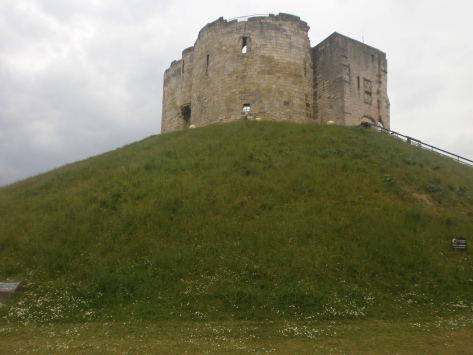
When we recall the ghastly mass pogroms against the Jewish people, minds turn inevitably to recent history, and the horrors perpetrated by the Nazi regime.
But one particular event right here in England should really give us all pause for thought.
In the year 1190, at the height of the Crusades, antagonism against Muslims spilled over to fester into a growing resentment of the Jewish population in England. Propagandists fanned these flames to a murderous ferocity.
One of the largest Jewish populations of that time was centered around the city of York, the biggest city on the east coast between London and the Scottish borders.
Then, in 1189, Richard the First- the famous Lionheart- was crowned King of England. Almost at once, an ugly (and untrue) rumour began to circulate that Richard had ordered the massacre of the entire Jewish population in England.
Plenty of people were only too happy to play along with this. Some were in debt to Jewish money lenders, and many of these suddenly saw a permanent way to settle their accounts. Tension and anxiety rolled across the entire country like poisonous fog.
To try and alleviate the situation in York itself, some one hundred and fifty Jewish people were offered shelter in the castle of York itself, which sat on the same imperious mound now occupied by Clifford’s Tower. In those days, the castle was a mostly wooden construction that dominated the city, much as the current tower still does.
Somewhere down the line, trust completely broke down between the Jewish people and their erstwhile hosts on the royal side. In the fear fuelled atmosphere, desperate people on both sides took desperate measures.
The Jews simply locked their hosts-cum-gaolers out of their own castle. Enraged, those same officials summoned up massive military reinforcements.
They were joined by a swelling mob of howling, baying locals, many of them whipped up by both the propaganda and the desire to settle old scores. They soon flared up into a hate filled host. Almost inevitably, this soon ran out of control.
Inside the tower, the encircled Jews realised that there was, quite literally, no way out.
On March 16th, 1190- the eve of the Sabbath before Passover-a rabbi urged the huddled, terrified castle inhabitants to kill their own families. Many did just that.
Husbands killed their wives and children before killing themselves. Under promise of an amnesty, some of the survivors came out, only to be slaughtered on the spot by the mob. In the final act of this ghastly tragedy, the wooden castle itself was set on fire and burned to the ground.
This horrific event remains one of the darkest stains in British history, and one of the least well documented. Hardly surprising.
The current tower, rebuilt in stone shortly afterwards, would see more historical gore. In 1537 Robert Aske, who had led the ‘Pilgrimage of Grace’ against the Reformation organised by Henry VIII and his secretary, Thomas Cromwell, was publicly hanged on top of the castle dungeon.
Today, the grim, blood soaked citadel is still a sobering site; a subdued monolith, suffused with the memory of that terrible day in 1190 when over a hundred terrified people were slaughtered simply as a result of religious bigotry and financial expediency.